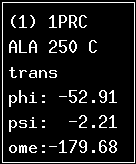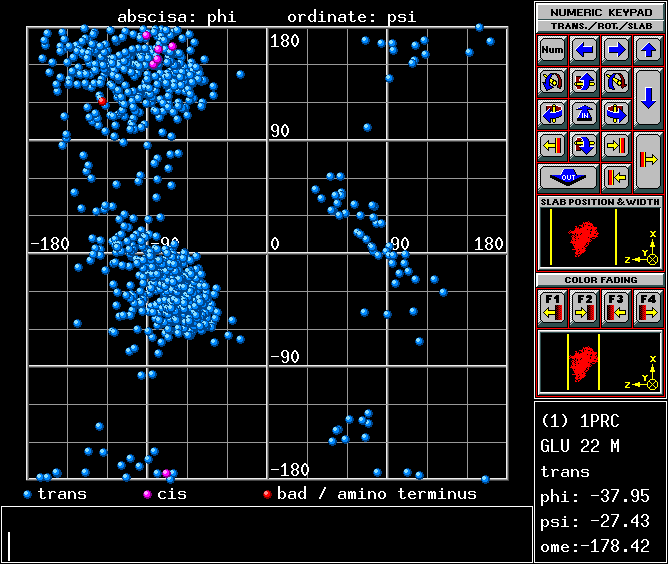| KEYWORD | DESCRIPTION |
| ram sel | Draw Ramachandran plot for selected residues. |
| ram off |
Return to default drawing mode (atomic structure).
Instead using this command, you can hit the ESCAPE key. |


| COMMAND | DESCRIPTION |
| ram | Draw Ramachandran plot for all residues. |
| ram off | Return to default drawing mode (atomic structure). |
| ram sel | Draw Ramachandran plot for selected residues. |
|
sel pro
ram sel |
Select all prolines and draw Ramachandran
plot for prolines. |
|
sel cis
ram sel |
Select all residues in cis conformation and
draw Ramachandran plot for them. |
|
sel bad
ram sel |
Select bad residues (peptide unit not planar)
and draw Ramachandran plot. |
|
sel tra
ram sel |
Select all residues in trans conformation and
draw Ramachandran plot. |